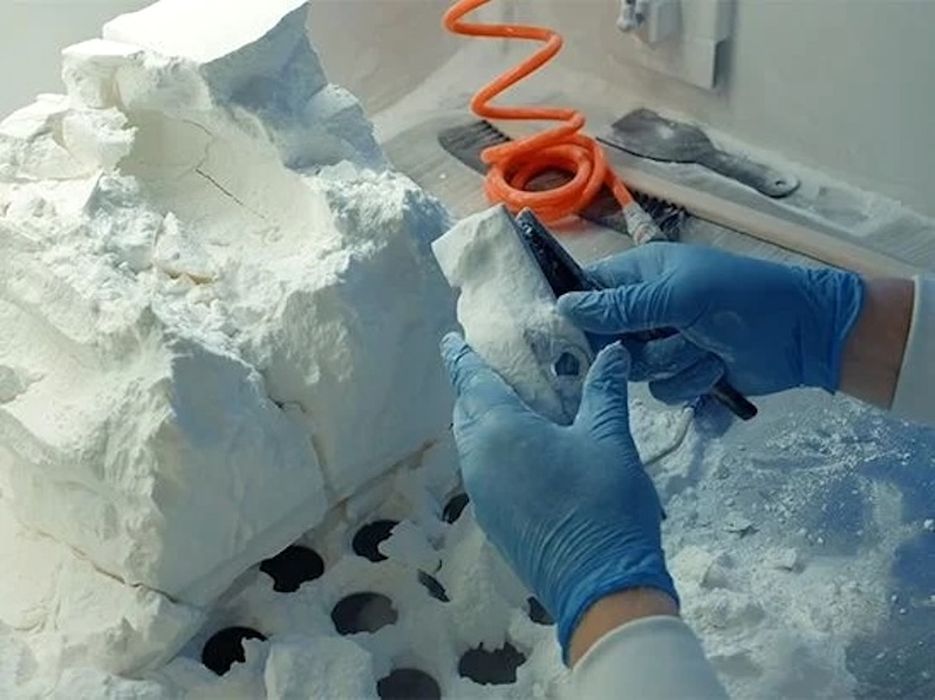
Stratasys issued a number of interesting updates last week.
SAF Post Processing
The first dealt with their increasingly popular SAF system, with the H350 3D printer. This device uses the SAF 3D printing process, where powder is selectively fused by first dropping a special solution. The solution absorbs energy and radiates heat, causing the surrounding thermoplastic powder to melt and fuse.
SAF is an ideal technology for larger-scale 3D printing, but there’s a catch: the completed prints are embedded in unfused powder and must be extracted and cleaned. This is normally done manually, but there are possibilities for automated post-processing.
Stratasys has now come up with a solution: They’ve partnered with AM Solutions, producers of a line of post-processing equipment. The two will produce the PowderEase T1 system that can perform not one, but three different post-processing steps: powder breakout, retrieval, and dosing.
The PowderEase T1 can handle the output of up to six H350 systems on its own, which would be ideal for a production environment with a fleet of SAF systems. Stratasys said the PowderEase T1 can save up to 50 minutes of labor effort on each build.
Those savings could be critical for production SAF operations, where the game is to keep the machines going as much as possible to increase throughput rates.
FDM Improvements
Stratasys also introduced what seems to be their very first filament drying system, the Fortus FDC, or “filament drying cabinet.”
Dry filament has become a necessity when printing many high-performance engineering materials, which become compromised if exposed to ambient humidity.
The Fortus FDC can accommodate two of the company’s “Xtend 250” spools at once. For those unfamiliar, the Xtend 250 contains 250 cubic inches (4.1L) of material. In terms of weight, this would vary by material. However, an example would be ULTEM 9085, which would be about 5.5kg per spool — quite big.
The Fortus FDC is designed to work with the company’s larger FDM machines, the Fortus 450mc and F900, both of which are production devices that can spend days printing larger objects.
In addition, Stratasys also announced a new PC-ESD material for their Fortus systems.
P3 Materials
In yet another announcement, Stratasys announced they’re adding an amazing 30 new materials for their P3 (Origin) resin system. These are not all produced by Stratasys and are, in fact, entries in the open materials compatibility list for the equipment.
An example material in the new collection is Forward AM’s Ultracur3D RG 3280, which is a ceramic-filled material that Stratasys said is suitable for printing injection molding tooling.
Via Stratasys
